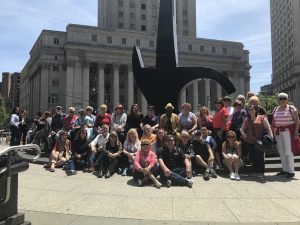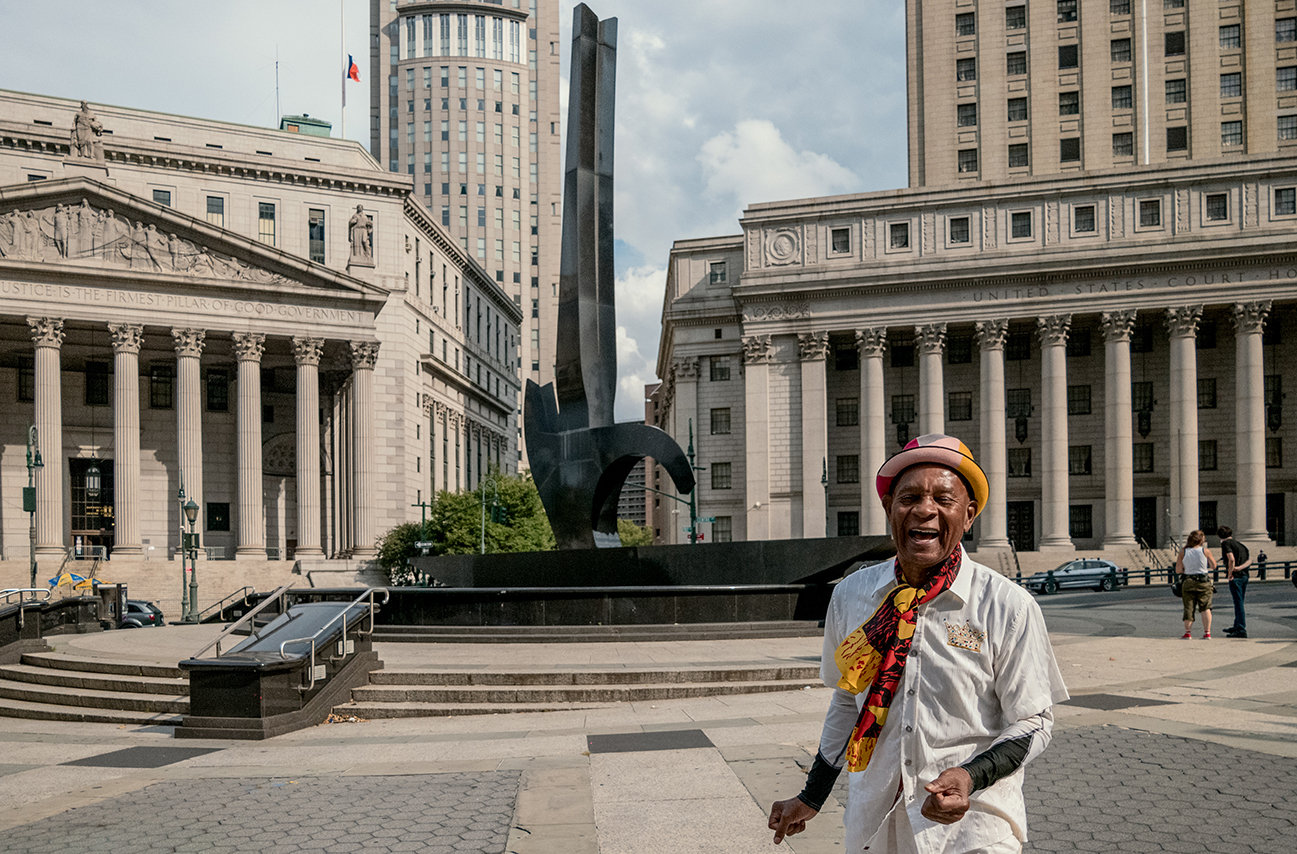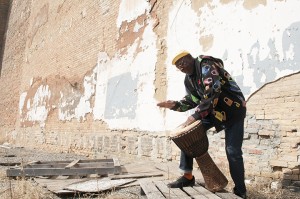As modern-day foot soldiers march in the largest city of a nation they believe has not always delivered the same promises to certain groups of people, they often gather at a granite monument created by an Illinois State doctoral alum.
New York City’s Thomas Paine Park at Foley Square, the epicenter of the Black Lives Matter movement in Lower Manhattan, has been home since 2000 to the “Triumph of the Human Spirit,” which took Dr. Lorenzo Pace, Ed.D ’78, nearly a decade to complete. The 65-foot black granite sculpture depicts an abstract female antelope known as the Chiwara from Mali, West Africa. It is mounted on a boat-shaped base that represents the first Native Americans in the area, the immigrants passing through nearby Ellis Island, and the slave boats that brought Africans to the Americas. It sits directly on the site of the African Burial Ground, rediscovered in 1991.
The impressive structure reminds residents and visitors alike of the city’s early history of dehumanizing Black people and encourages them to think about progress. Pace’s creation sits at the crossroads between Federal Plaza and Centre Street, surrounded by the Thurgood Marshall Courthouse, the David N. Dinkins Manhattan Municipal Building, along with other significant national and state buildings. It is also just blocks away from the mayor’s office, the World Trade Center, and Wall Street, site of the former slave market. What was once considered worthless land is now among the most expensive in the country.

Alumnus Lorenzo Pace with members of the Wonsook Kim College of Fine Arts New York Theatre Trip community group in front of Pace’s “Triumph of the Human Spirit” in June 2019. Photo provided by Stephanie Kohl Ringle.
In the wake of George Floyd’s death May 25 and the subsequent arrest of Minneapolis police offers, concerned New Yorkers, along with residents of other U.S. cities, took to the streets demanding change in law enforcement procedures and systemic racism. In Manhattan, it all kicked off at Foley Square and “Triumph of the Human Spirit.” This has been a major gathering site, often highlighted in TV shows and the media since these grounds were established, for protest. On July 9, Black Lives Matter of Greater New York along with Councilwoman Margaret Chin and Manhattan Borough President Gale A. Brewer announced the co-naming of Centre Street to Black Lives Matter Boulevard.
It was a significant moment for Pace, who built the monument hoping to spark the conversations that are being had now in an aggressive plea for equal protection under the law.
“When they decided to change the name from Centre Street to Black Lives Matter Boulevard, that was a shock,” Pace said. “Beautiful integration to say those 10 years of work weren’t in vain. Now that spot is the centerpiece of the movement of what I call the Great Awakening.”
During the construction of what was supposed to be a federal building at the site in 1991, workers found intact remains of 400 enslaved Africans. It was deemed a National Historic Landmark shortly after, and the search was underway for artists to commemorate the spot.
Around this same time, Pace’s father passed away. At the funeral in Birmingham, Alabama, Pace was bestowed a lock that shackled his great-great-grandfather, who was a slave. The timing was right, and Pace made himself available to the City of New York for the project. He was ultimately chosen, and a replica of that lock is now part of the monument’s base.
Pace encountered challenges along the way as his first two ideas were turned down. While it was a frustrating process, he kept pushing. He felt he owed it to his relatives and the Black people who came before him.
“We are here to learn, and we can’t shy away from the topic of systemic racism in this country. We all have to be a part of eradicating it from our discourse.”—Lorenzo Pace
“My ancestors were very patient with what they had to endure in this country,” Pace said. “They had to show perseverance, tenacity, and kept moving forward. That gave me the inspiration to keep moving forward myself.”
He ultimately went with a more abstract approach, selecting the shape of a female antelope to represent the next generation. The “Triumph of the Human Spirit” weighs 300 tons and stands five stories high. It’s the largest site-specific structure that deals with enslavement in America.
In the summer of 2019, Pace was the alumni guest speaker at a Wonsook Kim College of Fine Arts theatre trip in New York. Dr. Larry Dietz, president of Illinois State, attended. Pace also took the group to the statue.
Michael Kotowski ’84, now a technology consultant living in Manhattan, was moved by the experience at the monument that has been the backdrop for other Foley Square demonstrations such as Occupy Wall Street and protests of the Dakota Pipeline.
“It is the epicenter for all that energy for change,” Kotowski said. “And you can’t recognize change until you honor the past. This narrative has been building and has been the same, and it’s finally catching up.”
While Pace’s granite creation can only be seen in New York, he hopes it can be felt throughout the nation. That includes at Illinois State University, a place Pace said propelled him to grow, change, and explore. In 2005, a replica of “Triumph of the Human Spirit was included in the “Slavery in New York” exhibition at New York Historical Society.
Pace has a few paintings in the works symbolizing the current movement around the nation. He plans to continue sharing more stories to promote equity and a just society. For now, he encourages everyone to learn about the past and take something from this moment to spring society forward.
“We are here to learn, and we can’t shy away from the topic of systemic racism in this country,” Pace said. “We all have to be a part of eradicating it from our discourse.”


